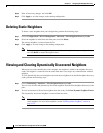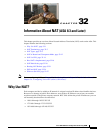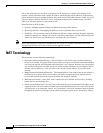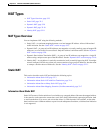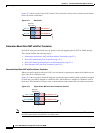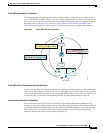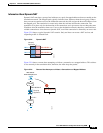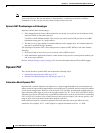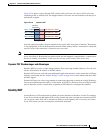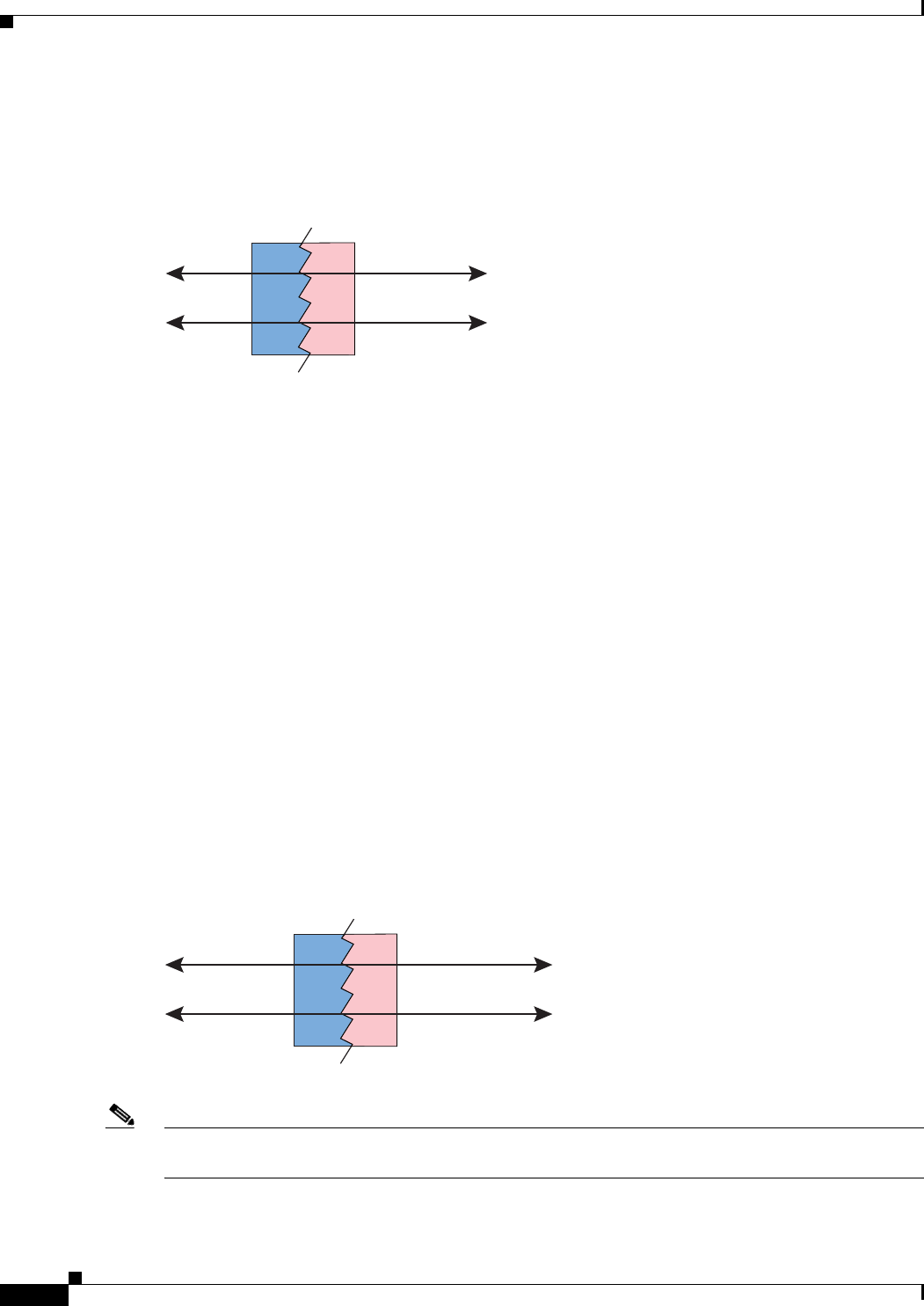
32-4
Cisco ASA 5500 Series Configuration Guide using ASDM
Chapter 32 Information About NAT (ASA 8.3 and Later)
NAT Types
Figure 32-1 shows a typical static NAT scenario. The translation is always active so both real and remote
hosts can initiate connections.
Figure 32-1 Static NAT
Information About Static NAT with Port Translation
Static NAT with port translation lets you specify a real and mapped protocol (TCP or UDP) and port.
This section includes the following topics:
• Information About Static NAT with Port Address Translation, page 32-4
• Static NAT with Identity Port Translation, page 32-5
• Static NAT with Port Translation for Non-Standard Ports, page 32-5
• Static Interface NAT with Port Translation, page 32-5
Information About Static NAT with Port Address Translation
When you specify the port with static NAT, you can choose to map the port and/or the IP address to the
same value or to a different value.
Figure 32-2 shows a typical static NAT with port translation scenario showing both a port that is mapped
to itself and a port that is mapped to a different value; the IP address is mapped to a different value in
both cases. The translation is always active so both translated and remote hosts can initiate connections.
Figure 32-2 Typical Static NAT with Port Translation Scenario
Note For applications that require application inspection for secondary channels (for example, FTP and VoIP),
the ASA automatically translates the secondary ports.
10.1.1.1 209.165.201.1
Inside Outside
10.1.1.2 209.165.201.2
130035
Security
Appliance
10.1.1.1:23 209.165.201.1:23
Inside Outside
10.1.1.2:8080 209.165.201.2:80
130044
Security
Appliance



